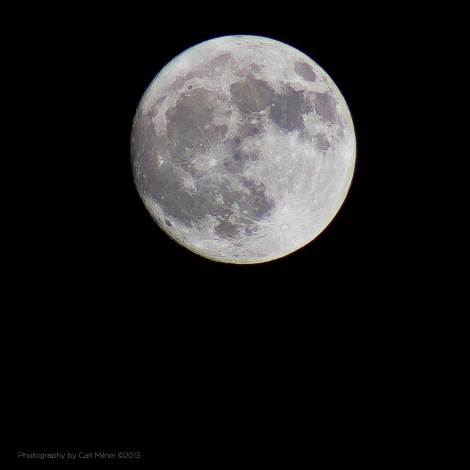[UPDATED]
I Waved at Saturn and got the Certificate to prove it via NASA

I Waved at Saturn Official NASA Certificate
_______________________________________________________
I wasn’t originally going to blog about this because so many others will be doing exactly the same, but its the historical connections and significance this image will convey, it’s based on one of my ‘all time’ favourite photographs, which is not something of great visual merit, but it’s the back story and what those few blue pixels in that image represent, I am of course referring to the famous Pale Blue Dot image taken in 1990 by the Voyager 1 spacecraft from a record distance of about 6 billion kilometers (3.7 billion miles) from Earth, as part of the solar system Family Portrait series of images. The late and still inspiring Carl Sagan commanded by NASA to turn its camera around and to take a photograph of Earth across a great expanse of space.
Now NASA Cassini space is about to do the same and take Pale Blue Dot II on Fri 10:27PM at 22:27 BST… this will be The Day the Earth Smiled and Waved at Saturn
Below is the location of Saturn in the Leeds sky at the precise time Cassini will take this historical photograph…don’t forget to wave 🙂
When you look at that shiny white planet in the Western sky, think back to what Carl Sagan said of that historical day back in 1990 when the original Pale Blue Dot photography was taken.
A Vision of the Human Future in Space
“Look again at that dot. That’s here. That’s home. That’s us. On it everyone you love, everyone you know, everyone you ever heard of, every human being who ever was, lived out their lives. The aggregate of our joy and suffering, thousands of confident religions, ideologies, and economic doctrines, every hunter and forager, every hero and coward, every creator and destroyer of civilization, every king and peasant, every young couple in love, every mother and father, hopeful child, inventor and explorer, every teacher of morals, every corrupt politician, every “superstar,” every “supreme leader,” every saint and sinner in the history of our species lived there-on a mote of dust suspended in a sunbeam.
The Earth is a very small stage in a vast cosmic arena. Think of the endless cruelties visited by the inhabitants of one corner of this pixel on the scarcely distinguishable inhabitants of some other corner, how frequent their misunderstandings, how eager they are to kill one another, how fervent their hatreds. Think of the rivers of blood spilled by all those generals and emperors so that, in glory and triumph, they could become the momentary masters of a fraction of a dot.
Our posturing, our imagined self-importance, the delusion that we have some privileged position in the Universe, are challenged by this point of pale light. Our planet is a lonely speck in the great enveloping cosmic dark. In our obscurity, in all this vastness, there is no hint that help will come from elsewhere to save us from ourselves.
The Earth is the only world known so far to harbor life. There is nowhere else, at least in the near future, to which our species could migrate. Visit, yes. Settle, not yet. Like it or not, for the moment the Earth is where we make our stand.
It has been said that astronomy is a humbling and character-building experience. There is perhaps no better demonstration of the folly of human conceits than this distant image of our tiny world. To me, it underscores our responsibility to deal more kindly with one another, and to preserve and cherish the pale blue dot, the only home we’ve ever known.”
― Carl Sagan, Pale Blue Dot:

What NASA has to say on the subject:
One of the most exciting Cassini events in 2013 will be the unusual opportunity on July 19 to image the whole Saturn system as it is backlit by the sun. With Saturn covering the harsh light of the sun, we will be gathering unique ring science and also catching a glimpse of our very own home planet.
The main science goal for the mosaic we are making of the Saturn system is to look at the more diffuse rings that encircle Saturn and check for change over time. A previous mosaic of the Saturn system Cassini made in 2006 revealed that the dusty E ring, which is fed by the water-ice plume of the moon Enceladus, had unexpectedly large variations in brightness and color around its orbit. We’ll want to see how that looks seven Earth years and a Saturnian season later, giving us clues to the forces at work in the Saturn system. We’ll do this analysis by collecting data from our visual and infrared mapping spectrometer, composite infrared mapping spectrometer and ultraviolet imaging spectrograph in addition to the imaging cameras.
But one of the best parts of the mosaic we’re making on July 19 is that we’ll be able to take a picture of Earth – and all of you — from about 898 million miles (1.44 billion kilometers) away. The Earth will appear to be just a pixel, but you can see in this simulated close-up what parts of it will be illuminated.
Opportunities to image Earth from the outer solar system are few and far between and special care must be taken so we don’t blind our cameras by looking in the direction of the sun, where Earth is. There have been only two images of Earth from the outer solar system in all the time humankind has been venturing out into space. The first and most distant was one was taken 23 years ago by NASA’s Voyager 1 spacecraft from 4 billion miles (6 billion kilometers away), showing Earth as a pale blue dot . The other opportunity was Cassini’s image in 2006 from 926 million miles (1.49 billion kilometers).















